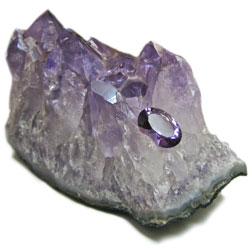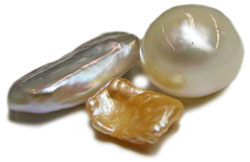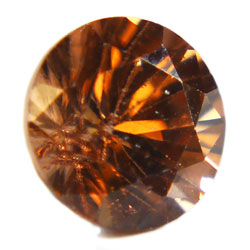

Amethyst
Amethyst is a purple variety of quartz crystal getting its color from irradiation, iron impurities, and the presence of trace elements. Although there are other purple gems such as sapphire and tanzanite, amethyst is the gem most commonly associated with the color. The purple color of amethyst can range from a light lilac to a deep, intense royal purple (BTW--amethyst was once only worn by royalty) and from brownish to vivid. Amethyst used to be as expensive as ruby and emerald up until the 19th Century when Brazil's large deposits were discovered.
Legend has it that amethyst was created when the wine god Backus drenched a crystallized maiden with the juice of the grape and was thought to prevent drunkenness, especially if the drinker used an amethyst cup. The word amethystos means "not drunk" in ancient Greek. Amethyst was also considered a cure for headaches, toothaches and gout in addition to providing protection from poisoning and plague. In addition, amethyst was believed to protect soldiers, bring victory, and help hunters capture wild beasts.
Other February Birthstones


Print